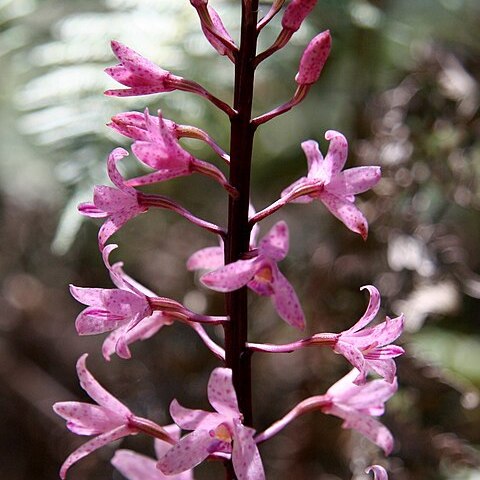A robust orchid. A herb which is without leaves and grows on rotting plant material. It grows to 1 m high. The flowers are along a stalk 60 cm long. They are pale pink with darker spots. The flowers are 2 cm across. The sepals and petals are free, spreading and equal. The rhizome is light brown with white flesh and 1.5 cm across.

